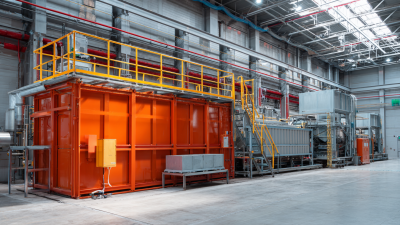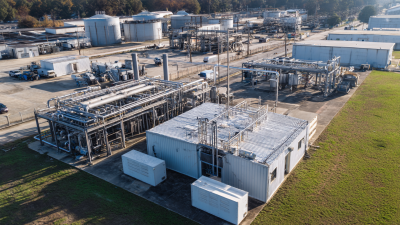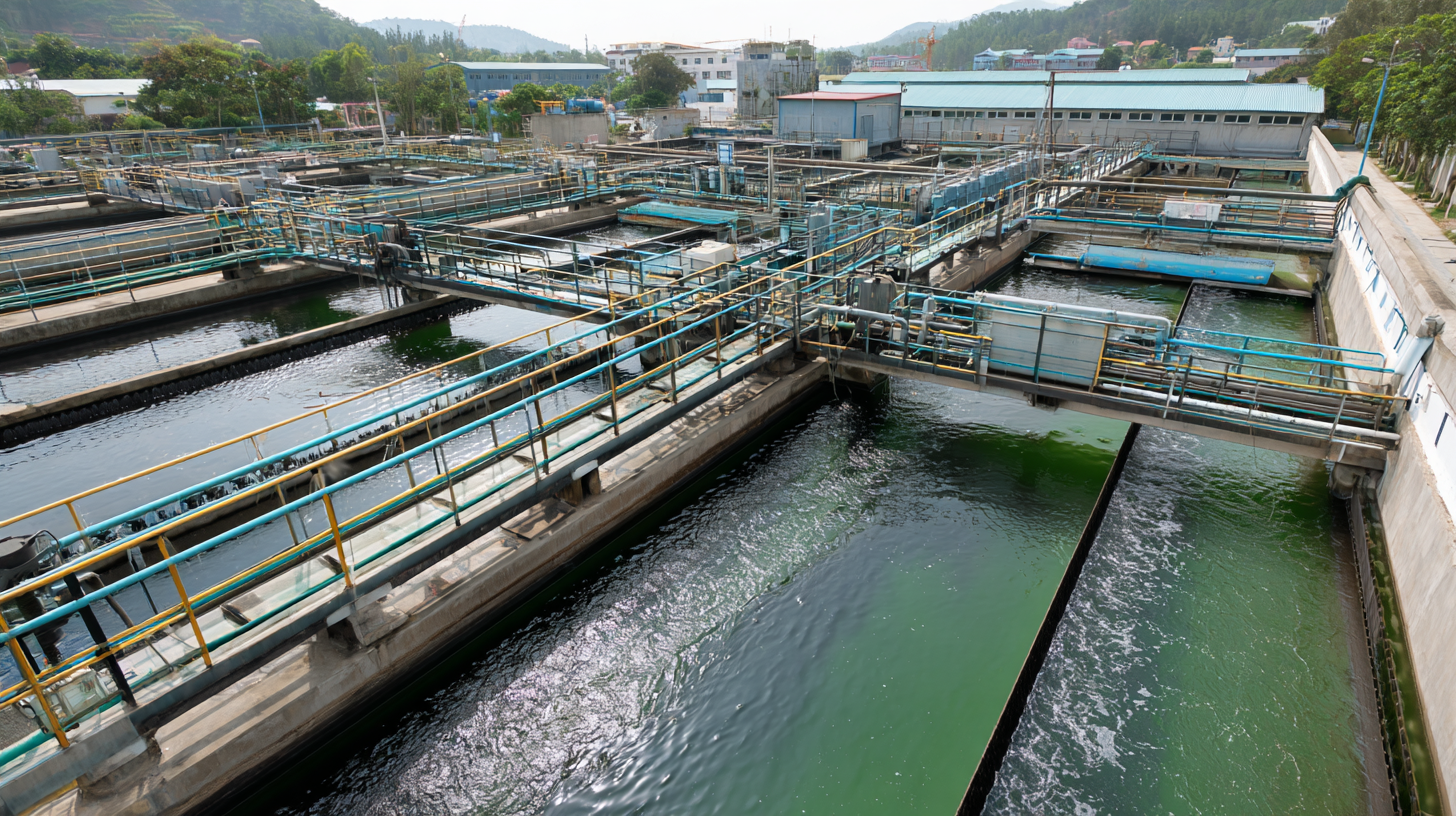 Back in 2023, the need for really innovative sewage treatment solutions has skyrocketed—thanks largely to faster urban growth worldwide and tougher regulations aimed at protecting our water resources. If you’ve seen recent reports from Global Market Insights, they’re talking about the wastewater treatment industry possibly surpassing $800 billion by the end of this decade. And it’s not just about keeping up—it’s about advancing tech to meet those ever-stricter environmental standards.
At APEX Company, we’re proud to be right at the forefront of this shift. We specialize in top-notch sludge drying and conveying equipment, along with some pretty complex wastewater treatment systems. Our products are doing really well, especially in China, but they’re also in high demand across the globe. That’s a clear sign of the trust and positive feedback we’ve received from customers everywhere.
Looking at the top 10 sewage treatment solutions for buyers worldwide, it’s obvious that investing in cutting-edge technology is more important than ever if we want to tackle the big challenges around sewage management and sustainability. It’s an exciting time, and we’re just getting started!
Back in 2023, the need for really innovative sewage treatment solutions has skyrocketed—thanks largely to faster urban growth worldwide and tougher regulations aimed at protecting our water resources. If you’ve seen recent reports from Global Market Insights, they’re talking about the wastewater treatment industry possibly surpassing $800 billion by the end of this decade. And it’s not just about keeping up—it’s about advancing tech to meet those ever-stricter environmental standards.
At APEX Company, we’re proud to be right at the forefront of this shift. We specialize in top-notch sludge drying and conveying equipment, along with some pretty complex wastewater treatment systems. Our products are doing really well, especially in China, but they’re also in high demand across the globe. That’s a clear sign of the trust and positive feedback we’ve received from customers everywhere.
Looking at the top 10 sewage treatment solutions for buyers worldwide, it’s obvious that investing in cutting-edge technology is more important than ever if we want to tackle the big challenges around sewage management and sustainability. It’s an exciting time, and we’re just getting started!
These days, with everyone really paying more attention to sustainability, eco-conscious buyers are on the hunt for innovative sewage treatment solutions. As regulations become stricter and people become more aware of environmental issues, the demand for smarter, more responsible wastewater management tech is definitely on the rise. Among the options out there, advanced sewage treatment methods really stand out—they not only deliver dependable results but also offer a bunch of environmental perks. Stuff like membrane bioreactors, constructed wetlands, and anaerobic digestion systems focus on reclaiming resources and cutting down carbon footprints. Honestly, these are perfect choices for global buyers who want to make a real positive impact.
At APEX, we’re proud to be at the forefront when it comes to cutting-edge sludge drying and conveying equipment. Plus, we’ve got solid expertise in tackling tough wastewater treatment challenges. All of our products are built with sustainability in mind—meaning they don’t sip energy and still pack a punch in efficiency. Known for quality and reliability, we’re committed to serving clients worldwide, helping them adopt more eco-friendly practices. As the push for sustainable solutions keeps growing, we’re more than ready to provide innovative equipment that meets the needs of environmentally conscious buyers everywhere.
With the world’s population booming and cities expanding rapidly, our current ways of managing wastewater are really feeling the strain—especially in rural areas, where big, centralized systems just don’t always cut it. Did you know that, according to the UN, over 4 billion people—more than half of everyone on the planet—still don’t have access to proper, safe sanitation services? That’s a huge deal, and it shows just how urgent it is to come up with smarter, decentralized wastewater solutions that can work well in these communities while also taking care of our environment.
One promising option that’s been gaining ground is decentralized wastewater treatment systems, often called DEWATS. These setups are usually more affordable and simpler to run than traditional systems. The WHO reports that they can cut down pollution by up to 90%, which is pretty impressive and means cleaner water around these areas. Plus, there's a lot of research now pointing out that these systems aren’t just about waste—they can actually help recover resources. For example, organizations like the FAO mention that treated wastewater can be reused for irrigation, which could supply up to 40% of the water needed for farming in dry regions.
As technology keeps improving, new solutions like constructed wetlands, biofilters, and modular treatment units are becoming more popular. These options are not just environmentally friendly—they also give local communities a say in how their water gets treated, making the whole process more effective and tailored to local needs. It’s really clear that investing in these decentralized systems and rolling them out widely is going to be super important if we want to tackle the global sanitation crisis and make sure everyone has access to safe water in the future.
| Solution Type | Capacity (m³/day) | Technology Used | Key Features | Suitable Applications |
|---|---|---|---|---|
| Septic Tank System | 5-50 | Anaerobic Digestion | Low maintenance, cost-effective | Rural homes, small communities |
| Composting Toilet | Varies | Natural Aerobic Process | No water usage, eco-friendly | Off-grid living, parks |
| Packaged Treatment Plant | 10-100 | Membrane Bioreactor | Compact, modular design | Small towns, campsites |
| Aerobic Treatment Unit | 5-40 | Aerobic Digestion | Fast treatment, low footprint | Rural households, small businesses |
| Constructed Wetland | 5-100 | Natural Filtration | Sustainable, low tech | Parks, housing developments |
| Biofilter System | 10-50 | Biofiltration | Efficient odor control | Small resorts, cabins |
| Reed Bed System | 1-20 | Reed Plant Uptake | Simple, low maintenance | Individual homes, schools |
| Membrane Aerated Biofilm Reactor | 20-100 | Membrane Technology | High efficiency, space-saving | Communities, industries |
| SBR (Sequential Batch Reactor) | 10-80 | Batch Treatment | Flexible operation, compact | Rural utilities, event sites |
| Smart Treatment System | 20-200 | IoT Technology | Real-time monitoring | Smart cities, advanced rural areas |
When you're looking at sewage treatment options in 2023, one thing that really helps to get straight is the difference between aerobic and anaerobic systems. Aerobic setups, which rely on oxygen to break down waste, tend to be better at reducing organic stuff in wastewater. Plus, they usually don’t generate much sludge and can produce water that’s pretty clean and meets high environmental standards. The catch? They do need a steady power supply and can get a bit pricey to run because of the aeration process.
On the flip side, anaerobic systems work without oxygen — they use bacteria that love low or no-oxygen conditions. These systems are often more energy-efficient since they generate biogas during treatment, which you can actually use for energy. But, they usually take longer to do their thing and might not clean the water quite as thoroughly as aerobic systems. That said, they’re often a good fit for bigger operations, especially if land is limited. Knowing the pros and cons of each helps you make smarter choices based on what you need for treatment and what environmental rules you have to follow.
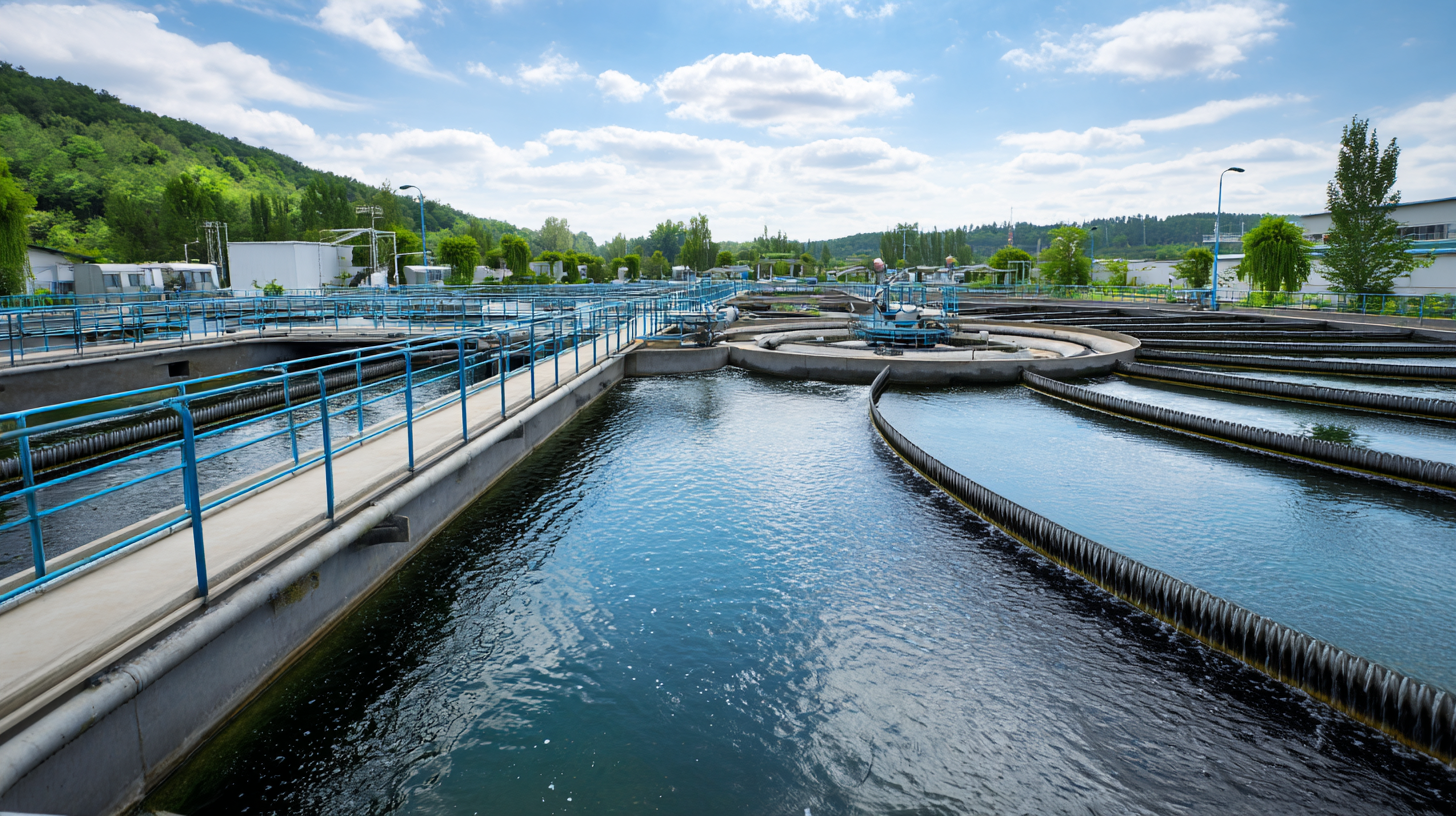
You know, the rise of Membrane Bioreactor (MBR) tech has totally changed the game when it comes to sewage treatment. It’s now a go-to solution for both homes and industries. Basically, it mixes biological cleanup with membrane filtering, and the results are pretty impressive—better quality effluent that easily meets all those strict discharge rules. What’s cool is that this high-tech setup doesn’t just improve how well it removes organic stuff and germs, but it also takes up way less space, which is a big deal for cities running out of room.
Lately, there’s been a real buzz around MBR tech because it’s energy-efficient and scalable—plus, recent innovations in membrane materials and designs are making it cheaper to maintain and longer-lasting. That’s a win for folks looking to use it globally. It’s also pretty flexible; it can handle different loads and conditions, making it suitable for all kinds of locations around the world. As environmental rules get tougher, these systems are probably gonna be a key part of sustainable wastewater management everywhere, proving they have a solid place in the future of sewage treatment.
This chart illustrates the adoption rates of various sewage treatment solutions as of 2023. Membrane Bioreactor (MBR) technology leads the market with an adoption rate of 65%, followed by other methods such as the Activated Sludge Process and Moving Bed Biofilm Reactor.
Urban sewage management is becoming an increasingly urgent issue for cities around the globe. Finding affordable, effective solutions is more important than ever if we want sustainable growth. In 2023, there's a bunch of innovative methods coming out for sewage treatment—things that really cater to the wide-ranging needs of buyers everywhere. Technologies that focus on being efficient and eco-friendly don’t just help cut down operating costs; they also improve the quality of the water after treatment. That’s a big win for municipalities who want to upgrade their wastewater systems without breaking the bank.
Leading the charge in this area is APEX Company. They're well-known for their state-of-the-art sludge drying and conveying equipment, plus advanced wastewater treatment tech. Their products are built to handle even the toughest wastewater problems, all while being affordable enough for city use. With solid sales across China and a growing presence internationally, APEX has earned a solid reputation for reliability and top-notch quality. Teaming up with APEX means you're investing in innovative solutions that actually work—helping cities treat sewage more effectively and making urban environments cleaner and greener for everyone.
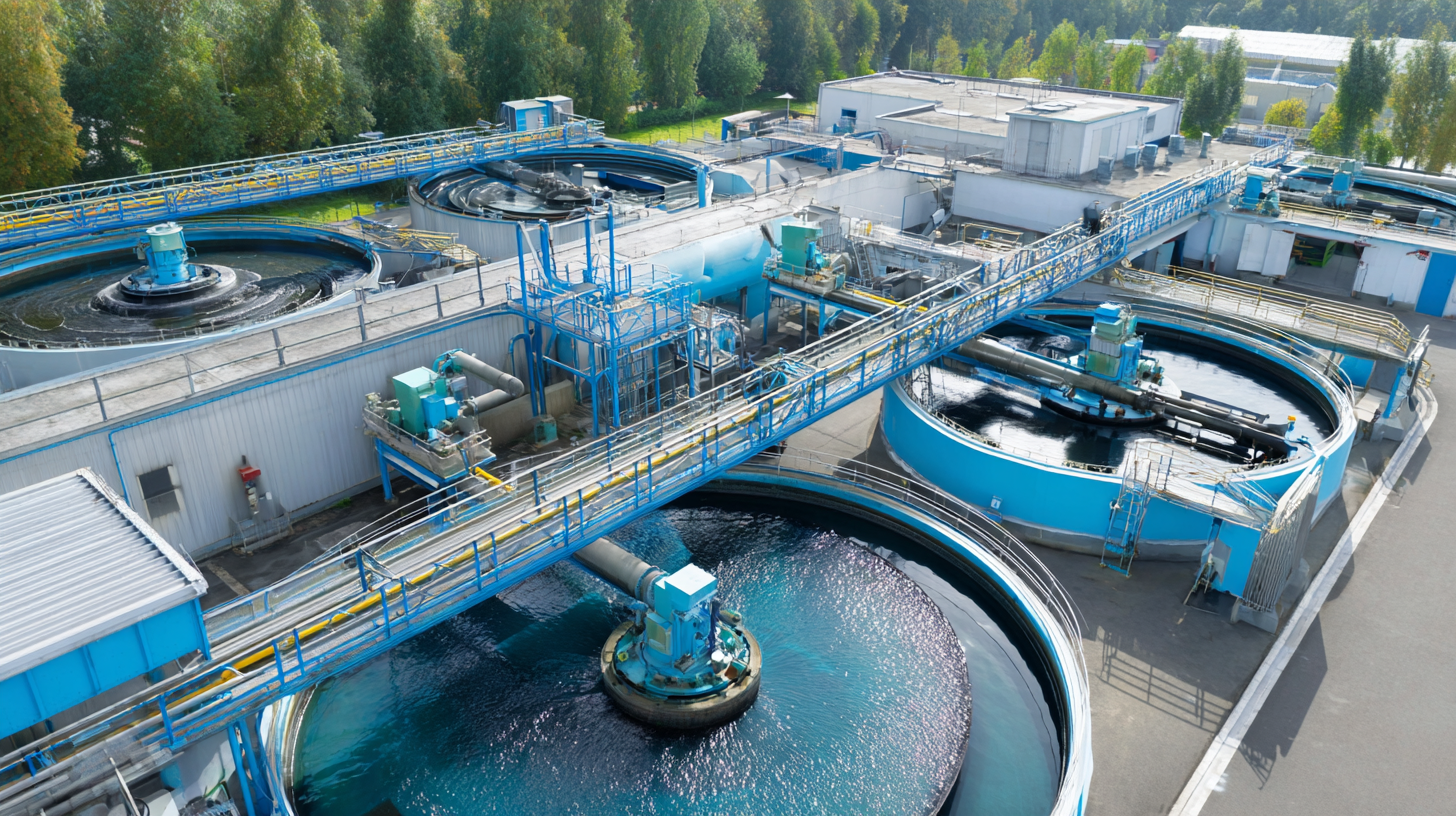
As cities around the world are growing faster than ever and facing all sorts of environmental issues, it’s becoming pretty clear that we need to incorporate IoT tech into sewage treatment methods. I mean, smart sewage systems are using sensors and data analysis to keep tabs on water quality, monitor waste build-up, and even predict when maintenance might be needed — kinda like giving the system a 'heads up' before things go wrong. This proactive way of working not only makes operations smoother and more efficient but also helps cities stay on top of environmental rules. By looking at real-time data, local authorities can fine-tune treatment processes, cut down on energy use, and help equipment last longer.
And here’s the thing—these IoT-enabled solutions don’t just improve the tech side of things; they also make everything more transparent and encourage more community involvement. With current data easily accessible, residents can get updates on water quality, which builds trust and makes service providers more accountable. Plus, these smart systems mean quicker responses if there’s a system failure or contamination problem, reducing health risks overall. As more cities jump on this bandwagon, the potential for better sustainability and smarter resource management really opens up — 2023 looks like it’s going to be a pretty pivotal year for bringing this kind of tech into urban infrastructure.
: Leading sustainable sewage treatment technologies include membrane bioreactors, constructed wetlands, and anaerobic digestion systems, which prioritize resource recovery and minimize carbon footprints.
Advanced sewage treatment technologies offer significant environmental benefits by improving efficiency, reducing energy consumption, and helping to minimize the carbon footprint of wastewater management practices.
APEX Company provides state-of-the-art sludge drying and conveying equipment and specializes in challenging wastewater treatment, focusing on sustainable practices and reliable performance.
Cost-effective urban sewage management is crucial for sustainable development as it helps municipalities reduce operational costs while improving the quality of treated water.
APEX Company offers innovative sewage treatment solutions that are economically viable for urban environments, including cutting-edge sludge drying equipment and advanced wastewater treatment technologies.
Increasing public awareness about environmental issues is driving the demand for efficient and responsible wastewater management technologies, prompting innovation in the sector.
Investing in sustainable sewage treatment solutions leads to effective wastewater management, lower operational costs, and a positive impact on the environment, contributing to a cleaner and more sustainable urban area.
APEX Company designs its products with sustainability in mind, ensuring minimal energy consumption while maximizing efficiency in sewage treatment processes.
No, APEX Company has a strong sales presence in China and is expanding its international presence, emphasizing its commitment to the global market for sustainable sewage treatment solutions.
APEX Company has built a reputation for quality and reliability through its innovative solutions, expertise in challenging wastewater issues, and dedication to sustainability.
Back in 2023, the buzz around innovative and eco-friendly sewage treatment options is definitely picking up. More and more people are looking for solutions that do the job well without harming the environment. Our blog dives into some of the coolest sustainable sewage technologies out there—especially those decentralized systems that are perfect for rural areas. We also take a close look at the debate between aerobic and anaerobic treatment methods, helping you figure out which one might be best for your specific needs. Plus, we’re excited about new trends like membrane bioreactors (MBRs) and some budget-friendly ways to handle sewage in cities. We even touch on how IoT tech is making wastewater management smarter and more efficient.
At APEX, we’re proud to be leading the charge in these innovations. Our specialties include top-notch sludge drying and conveying equipment, along with advanced wastewater treatment solutions. We’re dedicated to meeting the rising global demand for dependable sewage treatment, and it’s incredibly rewarding to see our efforts earn us the trust of customers around the world.

